-
FACTOR ANALYSIS
-
\r\n\r\n\r\nValue chain Analysis
-
\r\n\r\n\r\nPorter's
-
Five Forces Analysis
-
\r\n\r\n\r\nBargaining Power of Suppliers
-
\r\n\r\n\r\nBargaining
-
Power of Buyers
-
\r\n\r\n\r\nThreat of New Entrants
-
\r\n\r\n\r\nThreat
-
of Substitutes
-
\r\n\r\n\r\nIntensity of Rivalry
-
\r\n\r\n\r\n\r\n\r\nCOVID-19
-
Impact Analysis
-
\r\n\r\n\r\nMarket Impact Analysis
-
\r\n\r\n\r\nRegional
-
Impact
-
\r\n\r\n\r\nOpportunity and Threat Analysis
-
\r\n\r\n\r\n\r\n\r\n\r\n\r\n
-
\r\n
-
\r\n\r\n\r\nDairy
-
Packaging Market, BY Packaging Type (USD Billion)
-
\r\n\r\n\r\nBottles
-
\r\n\r\n\r\nCans
-
\r\n\r\n\r\nPouches
-
\r\n\r\n\r\nCartons
-
\r\n\r\n\r\nCups
-
\r\n\r\n\r\n\r\n\r\nDairy
-
Packaging Market, BY Material (USD Billion)
-
\r\n\r\n\r\nPlastic
-
\r\n\r\n\r\nGlass
-
\r\n\r\n\r\nMetal
-
\r\n\r\n\r\nPaperboard
-
\r\n\r\n\r\nCompostable
-
Materials
-
\r\n\r\n\r\n\r\n\r\nDairy Packaging Market,
-
BY Product Type (USD Billion)
-
\r\n\r\n\r\nMilk
-
\r\n\r\n\r\nCheese
-
\r\n\r\n\r\nYogurt
-
\r\n\r\n\r\nButter
-
\r\n\r\n\r\nCream
-
\r\n\r\n\r\n\r\n\r\nDairy
-
Packaging Market, BY End Use (USD Billion)
-
\r\n\r\n\r\nResidential
-
\r\n\r\n\r\nCommercial
-
\r\n\r\n\r\nInstitutional
-
\r\n\r\n\r\n\r\n\r\nDairy
-
Packaging Market, BY Regional (USD Billion)
-
\r\n\r\n\r\nNorth
-
America
-
\r\n\r\n\r\nUS
-
\r\n\r\n\r\nCanada
-
\r\n\r\n\r\n\r\n\r\nEurope
-
\r\n\r\n\r\nGermany
-
\r\n\r\n\r\nUK
-
\r\n\r\n\r\nFrance
-
\r\n\r\n\r\nRussia
-
\r\n\r\n\r\nItaly
-
\r\n\r\n\r\nSpain
-
\r\n\r\n\r\nRest
-
of Europe
-
\r\n\r\n\r\n\r\n\r\nAPAC
-
\r\n\r\n\r\nChina
-
\r\n\r\n\r\nIndia
-
\r\n\r\n\r\nJapan
-
\r\n\r\n\r\nSouth
-
Korea
-
\r\n\r\n\r\nMalaysia
-
\r\n\r\n\r\nThailand
-
\r\n\r\n\r\nIndonesia
-
\r\n\r\n\r\nRest
-
of APAC
-
\r\n\r\n\r\n\r\n\r\nSouth America
-
\r\n\r\n\r\nBrazil
-
\r\n\r\n\r\nMexico
-
\r\n\r\n\r\nArgentina
-
\r\n\r\n\r\nRest
-
of South America
-
\r\n\r\n\r\n\r\n\r\nMEA
-
\r\n\r\n\r\nGCC
-
Countries
-
\r\n\r\n\r\nSouth Africa
-
\r\n\r\n\r\nRest
-
of MEA
-
\r\n\r\n\r\n\r\n\r\n\r\n\r\n
-
\r\n
-
\r\n\r\n\r\nCompetitive
-
Landscape
-
\r\n\r\n\r\nOverview
-
\r\n\r\n\r\nCompetitive
-
Analysis
-
\r\n\r\n\r\nMarket share Analysis
-
\r\n\r\n\r\nMajor
-
Growth Strategy in the Dairy Packaging Market
-
\r\n\r\n\r\nCompetitive
-
Benchmarking
-
\r\n\r\n\r\nLeading Players in Terms of Number of Developments
-
in the Dairy Packaging Market
-
\r\n\r\n\r\nKey developments and growth
-
strategies
-
\r\n\r\n\r\nNew Product Launch/Service Deployment
-
\r\n\r\n\r\nMerger
-
& Acquisitions
-
\r\n\r\n\r\nJoint Ventures
-
\r\n\r\n\r\n\r\n\r\nMajor
-
Players Financial Matrix
-
\r\n\r\n\r\nSales and Operating Income
-
\r\n\r\n\r\nMajor
-
Players R&D Expenditure. 2023
-
\r\n\r\n\r\n\r\n\r\n\r\n\r\nCompany
-
Profiles
-
\r\n\r\n\r\nAmcor
-
\r\n\r\n\r\nFinancial
-
Overview
-
\r\n\r\n\r\nProducts Offered
-
\r\n\r\n\r\nKey
-
Developments
-
\r\n\r\n\r\nSWOT Analysis
-
\r\n\r\n\r\nKey
-
Strategies
-
\r\n\r\n\r\n\r\n\r\nSIG Combibloc
-
\r\n\r\n\r\nFinancial
-
Overview
-
\r\n\r\n\r\nProducts Offered
-
\r\n\r\n\r\nKey
-
Developments
-
\r\n\r\n\r\nSWOT Analysis
-
\r\n\r\n\r\nKey
-
Strategies
-
\r\n\r\n\r\n\r\n\r\nKraft Heinz
-
\r\n\r\n\r\nFinancial
-
Overview
-
\r\n\r\n\r\nProducts Offered
-
\r\n\r\n\r\nKey
-
Developments
-
\r\n\r\n\r\nSWOT Analysis
-
\r\n\r\n\r\nKey
-
Strategies
-
\r\n\r\n\r\n\r\n\r\nGreif
-
\r\n\r\n\r\nFinancial
-
Overview
-
\r\n\r\n\r\nProducts Offered
-
\r\n\r\n\r\nKey
-
Developments
-
\r\n\r\n\r\nSWOT Analysis
-
\r\n\r\n\r\nKey
-
Strategies
-
\r\n\r\n\r\n\r\n\r\nWestRock
-
\r\n\r\n\r\nFinancial
-
Overview
-
\r\n\r\n\r\nProducts Offered
-
\r\n\r\n\r\nKey
-
Developments
-
\r\n\r\n\r\nSWOT Analysis
-
\r\n\r\n\r\nKey
-
Strategies
-
\r\n\r\n\r\n\r\n\r\nBerry Global
-
\r\n\r\n\r\nFinancial
-
Overview
-
\r\n\r\n\r\nProducts Offered
-
\r\n\r\n\r\nKey
-
Developments
-
\r\n\r\n\r\nSWOT Analysis
-
\r\n\r\n\r\nKey
-
Strategies
-
\r\n\r\n\r\n\r\n\r\nSmurfit Kappa
-
\r\n\r\n\r\nFinancial
-
Overview
-
\r\n\r\n\r\nProducts Offered
-
\r\n\r\n\r\nKey
-
Developments
-
\r\n\r\n\r\nSWOT Analysis
-
\r\n\r\n\r\nKey
-
Strategies
-
\r\n\r\n\r\n\r\n\r\nParmalat
-
\r\n\r\n\r\nFinancial
-
Overview
-
\r\n\r\n\r\nProducts Offered
-
\r\n\r\n\r\nKey
-
Developments
-
\r\n\r\n\r\nSWOT Analysis
-
\r\n\r\n\r\nKey
-
Strategies
-
\r\n\r\n\r\n\r\n\r\nSonoco Products Company
-
\r\n\r\n\r\nFinancial
-
Overview
-
\r\n\r\n\r\nProducts Offered
-
\r\n\r\n\r\nKey
-
Developments
-
\r\n\r\n\r\nSWOT Analysis
-
\r\n\r\n\r\nKey
-
Strategies
-
\r\n\r\n\r\n\r\n\r\nMondi Group
-
\r\n\r\n\r\nFinancial
-
Overview
-
\r\n\r\n\r\nProducts Offered
-
\r\n\r\n\r\nKey
-
Developments
-
\r\n\r\n\r\nSWOT Analysis
-
\r\n\r\n\r\nKey
-
Strategies
-
\r\n\r\n\r\n\r\n\r\nTetra Pak
-
\r\n\r\n\r\nFinancial
-
Overview
-
\r\n\r\n\r\nProducts Offered
-
\r\n\r\n\r\nKey
-
Developments
-
\r\n\r\n\r\nSWOT Analysis
-
\r\n\r\n\r\nKey
-
Strategies
-
\r\n\r\n\r\n\r\n\r\nElopak
-
\r\n\r\n\r\nFinancial
-
Overview
-
\r\n\r\n\r\nProducts Offered
-
\r\n\r\n\r\nKey
-
Developments
-
\r\n\r\n\r\nSWOT Analysis
-
\r\n\r\n\r\nKey
-
Strategies
-
\r\n\r\n\r\n\r\n\r\nInternational Paper
-
\r\n\r\n\r\nFinancial
-
Overview
-
\r\n\r\n\r\nProducts Offered
-
\r\n\r\n\r\nKey
-
Developments
-
\r\n\r\n\r\nSWOT Analysis
-
\r\n\r\n\r\nKey
-
Strategies
-
\r\n\r\n\r\n\r\n\r\nSealed Air Corporation
-
\r\n\r\n\r\nFinancial
-
Overview
-
\r\n\r\n\r\nProducts Offered
-
\r\n\r\n\r\nKey
-
Developments
-
\r\n\r\n\r\nSWOT Analysis
-
\r\n\r\n\r\nKey
-
Strategies
-
\r\n\r\n\r\n\r\n\r\nDairyPak
-
\r\n\r\n\r\nFinancial
-
Overview
-
\r\n\r\n\r\nProducts Offered
-
\r\n\r\n\r\nKey
-
Developments
-
\r\n\r\n\r\nSWOT Analysis
-
\r\n\r\n\r\nKey
-
Strategies
-
\r\n\r\n\r\n\r\n\r\n\r\n\r\nAppendix
-
\r\n\r\n\r\nReferences
-
\r\n\r\n\r\nRelated
-
Reports
-
\r\n\r\n\r\n\r\n\r\nLIST Of tables
-
\r\n
-
\r\n\r\n\r\nLIST
-
OF ASSUMPTIONS
-
\r\n\r\n\r\nNorth America Dairy Packaging Market SIZE
-
ESTIMATES & FORECAST, BY PACKAGING TYPE, 2019-2035 (USD Billions)
-
\r\n\r\n\r\nNorth
-
America Dairy Packaging Market SIZE ESTIMATES & FORECAST, BY MATERIAL, 2019-2035
-
(USD Billions)
-
\r\n\r\n\r\nNorth America Dairy Packaging Market SIZE
-
ESTIMATES & FORECAST, BY PRODUCT TYPE, 2019-2035 (USD Billions)
-
\r\n\r\n\r\nNorth
-
America Dairy Packaging Market SIZE ESTIMATES & FORECAST, BY END USE, 2019-2035
-
(USD Billions)
-
\r\n\r\n\r\nNorth America Dairy Packaging Market SIZE
-
ESTIMATES & FORECAST, BY REGIONAL, 2019-2035 (USD Billions)
-
\r\n\r\n\r\nUS
-
Dairy Packaging Market SIZE ESTIMATES & FORECAST, BY PACKAGING TYPE, 2019-2035
-
(USD Billions)
-
\r\n\r\n\r\nUS Dairy Packaging Market SIZE ESTIMATES
-
& FORECAST, BY MATERIAL, 2019-2035 (USD Billions)
-
\r\n\r\n\r\nUS
-
Dairy Packaging Market SIZE ESTIMATES & FORECAST, BY PRODUCT TYPE, 2019-2035
-
(USD Billions)
-
\r\n\r\n\r\nUS Dairy Packaging Market SIZE ESTIMATES
-
& FORECAST, BY END USE, 2019-2035 (USD Billions)
-
\r\n\r\n\r\nUS
-
Dairy Packaging Market SIZE ESTIMATES & FORECAST, BY REGIONAL, 2019-2035 (USD
-
Billions)
-
\r\n\r\n\r\nCanada Dairy Packaging Market SIZE ESTIMATES
-
& FORECAST, BY PACKAGING TYPE, 2019-2035 (USD Billions)
-
\r\n\r\n\r\nCanada
-
Dairy Packaging Market SIZE ESTIMATES & FORECAST, BY MATERIAL, 2019-2035 (USD
-
Billions)
-
\r\n\r\n\r\nCanada Dairy Packaging Market SIZE ESTIMATES
-
& FORECAST, BY PRODUCT TYPE, 2019-2035 (USD Billions)
-
\r\n\r\n\r\nCanada
-
Dairy Packaging Market SIZE ESTIMATES & FORECAST, BY END USE, 2019-2035 (USD
-
Billions)
-
\r\n\r\n\r\nCanada Dairy Packaging Market SIZE ESTIMATES
-
& FORECAST, BY REGIONAL, 2019-2035 (USD Billions)
-
\r\n\r\n\r\nEurope
-
Dairy Packaging Market SIZE ESTIMATES & FORECAST, BY PACKAGING TYPE, 2019-2035
-
(USD Billions)
-
\r\n\r\n\r\nEurope Dairy Packaging Market SIZE ESTIMATES
-
& FORECAST, BY MATERIAL, 2019-2035 (USD Billions)
-
\r\n\r\n\r\nEurope
-
Dairy Packaging Market SIZE ESTIMATES & FORECAST, BY PRODUCT TYPE, 2019-2035
-
(USD Billions)
-
\r\n\r\n\r\nEurope Dairy Packaging Market SIZE ESTIMATES
-
& FORECAST, BY END USE, 2019-2035 (USD Billions)
-
\r\n\r\n\r\nEurope
-
Dairy Packaging Market SIZE ESTIMATES & FORECAST, BY REGIONAL, 2019-2035 (USD
-
Billions)
-
\r\n\r\n\r\nGermany Dairy Packaging Market SIZE ESTIMATES
-
& FORECAST, BY PACKAGING TYPE, 2019-2035 (USD Billions)
-
\r\n\r\n\r\nGermany
-
Dairy Packaging Market SIZE ESTIMATES & FORECAST, BY MATERIAL, 2019-2035 (USD
-
Billions)
-
\r\n\r\n\r\nGermany Dairy Packaging Market SIZE ESTIMATES
-
& FORECAST, BY PRODUCT TYPE, 2019-2035 (USD Billions)
-
\r\n\r\n\r\nGermany
-
Dairy Packaging Market SIZE ESTIMATES & FORECAST, BY END USE, 2019-2035 (USD
-
Billions)
-
\r\n\r\n\r\nGermany Dairy Packaging Market SIZE ESTIMATES
-
& FORECAST, BY REGIONAL, 2019-2035 (USD Billions)
-
\r\n\r\n\r\nUK
-
Dairy Packaging Market SIZE ESTIMATES & FORECAST, BY PACKAGING TYPE, 2019-2035
-
(USD Billions)
-
\r\n\r\n\r\nUK Dairy Packaging Market SIZE ESTIMATES
-
& FORECAST, BY MATERIAL, 2019-2035 (USD Billions)
-
\r\n\r\n\r\nUK
-
Dairy Packaging Market SIZE ESTIMATES & FORECAST, BY PRODUCT TYPE, 2019-2035
-
(USD Billions)
-
\r\n\r\n\r\nUK Dairy Packaging Market SIZE ESTIMATES
-
& FORECAST, BY END USE, 2019-2035 (USD Billions)
-
\r\n\r\n\r\nUK
-
Dairy Packaging Market SIZE ESTIMATES & FORECAST, BY REGIONAL, 2019-2035 (USD
-
Billions)
-
\r\n\r\n\r\nFrance Dairy Packaging Market SIZE ESTIMATES
-
& FORECAST, BY PACKAGING TYPE, 2019-2035 (USD Billions)
-
\r\n\r\n\r\nFrance
-
Dairy Packaging Market SIZE ESTIMATES & FORECAST, BY MATERIAL, 2019-2035 (USD
-
Billions)
-
\r\n\r\n\r\nFrance Dairy Packaging Market SIZE ESTIMATES
-
& FORECAST, BY PRODUCT TYPE, 2019-2035 (USD Billions)
-
\r\n\r\n\r\nFrance
-
Dairy Packaging Market SIZE ESTIMATES & FORECAST, BY END USE, 2019-2035 (USD
-
Billions)
-
\r\n\r\n\r\nFrance Dairy Packaging Market SIZE ESTIMATES
-
& FORECAST, BY REGIONAL, 2019-2035 (USD Billions)
-
\r\n\r\n\r\nRussia
-
Dairy Packaging Market SIZE ESTIMATES & FORECAST, BY PACKAGING TYPE, 2019-2035
-
(USD Billions)
-
\r\n\r\n\r\nRussia Dairy Packaging Market SIZE ESTIMATES
-
& FORECAST, BY MATERIAL, 2019-2035 (USD Billions)
-
\r\n\r\n\r\nRussia
-
Dairy Packaging Market SIZE ESTIMATES & FORECAST, BY PRODUCT TYPE, 2019-2035
-
(USD Billions)
-
\r\n\r\n\r\nRussia Dairy Packaging Market SIZE ESTIMATES
-
& FORECAST, BY END USE, 2019-2035 (USD Billions)
-
\r\n\r\n\r\nRussia
-
Dairy Packaging Market SIZE ESTIMATES & FORECAST, BY REGIONAL, 2019-2035 (USD
-
Billions)
-
\r\n\r\n\r\nItaly Dairy Packaging Market SIZE ESTIMATES
-
& FORECAST, BY PACKAGING TYPE, 2019-2035 (USD Billions)
-
\r\n\r\n\r\nItaly
-
Dairy Packaging Market SIZE ESTIMATES & FORECAST, BY MATERIAL, 2019-2035 (USD
-
Billions)
-
\r\n\r\n\r\nItaly Dairy Packaging Market SIZE ESTIMATES
-
& FORECAST, BY PRODUCT TYPE, 2019-2035 (USD Billions)
-
\r\n\r\n\r\nItaly
-
Dairy Packaging Market SIZE ESTIMATES & FORECAST, BY END USE, 2019-2035 (USD
-
Billions)
-
\r\n\r\n\r\nItaly Dairy Packaging Market SIZE ESTIMATES
-
& FORECAST, BY REGIONAL, 2019-2035 (USD Billions)
-
\r\n\r\n\r\nSpain
-
Dairy Packaging Market SIZE ESTIMATES & FORECAST, BY PACKAGING TYPE, 2019-2035
-
(USD Billions)
-
\r\n\r\n\r\nSpain Dairy Packaging Market SIZE ESTIMATES
-
& FORECAST, BY MATERIAL, 2019-2035 (USD Billions)
-
\r\n\r\n\r\nSpain
-
Dairy Packaging Market SIZE ESTIMATES & FORECAST, BY PRODUCT TYPE, 2019-2035
-
(USD Billions)
-
\r\n\r\n\r\nSpain Dairy Packaging Market SIZE ESTIMATES
-
& FORECAST, BY END USE, 2019-2035 (USD Billions)
-
\r\n\r\n\r\nSpain
-
Dairy Packaging Market SIZE ESTIMATES & FORECAST, BY REGIONAL, 2019-2035 (USD
-
Billions)
-
\r\n\r\n\r\nRest of Europe Dairy Packaging Market SIZE
-
ESTIMATES & FORECAST, BY PACKAGING TYPE, 2019-2035 (USD Billions)
-
\r\n\r\n\r\nRest
-
of Europe Dairy Packaging Market SIZE ESTIMATES & FORECAST, BY MATERIAL, 2019-2035
-
(USD Billions)
-
\r\n\r\n\r\nRest of Europe Dairy Packaging Market
-
SIZE ESTIMATES & FORECAST, BY PRODUCT TYPE, 2019-2035 (USD Billions)
-
\r\n\r\n\r\nRest
-
of Europe Dairy Packaging Market SIZE ESTIMATES & FORECAST, BY END USE, 2019-2035
-
(USD Billions)
-
\r\n\r\n\r\nRest of Europe Dairy Packaging Market
-
SIZE ESTIMATES & FORECAST, BY REGIONAL, 2019-2035 (USD Billions)
-
\r\n\r\n\r\nAPAC
-
Dairy Packaging Market SIZE ESTIMATES & FORECAST, BY PACKAGING TYPE, 2019-2035
-
(USD Billions)
-
\r\n\r\n\r\nAPAC Dairy Packaging Market SIZE ESTIMATES
-
& FORECAST, BY MATERIAL, 2019-2035 (USD Billions)
-
\r\n\r\n\r\nAPAC
-
Dairy Packaging Market SIZE ESTIMATES & FORECAST, BY PRODUCT TYPE, 2019-2035
-
(USD Billions)
-
\r\n\r\n\r\nAPAC Dairy Packaging Market SIZE ESTIMATES
-
& FORECAST, BY END USE, 2019-2035 (USD Billions)
-
\r\n\r\n\r\nAPAC
-
Dairy Packaging Market SIZE ESTIMATES & FORECAST, BY REGIONAL, 2019-2035 (USD
-
Billions)
-
\r\n\r\n\r\nChina Dairy Packaging Market SIZE ESTIMATES
-
& FORECAST, BY PACKAGING TYPE, 2019-2035 (USD Billions)
-
\r\n\r\n\r\nChina
-
Dairy Packaging Market SIZE ESTIMATES & FORECAST, BY MATERIAL, 2019-2035 (USD
-
Billions)
-
\r\n\r\n\r\nChina Dairy Packaging Market SIZE ESTIMATES
-
& FORECAST, BY PRODUCT TYPE, 2019-2035 (USD Billions)
-
\r\n\r\n\r\nChina
-
Dairy Packaging Market SIZE ESTIMATES & FORECAST, BY END USE, 2019-2035 (USD
-
Billions)
-
\r\n\r\n\r\nChina Dairy Packaging Market SIZE ESTIMATES
-
& FORECAST, BY REGIONAL, 2019-2035 (USD Billions)
-
\r\n\r\n\r\nIndia
-
Dairy Packaging Market SIZE ESTIMATES & FORECAST, BY PACKAGING TYPE, 2019-2035
-
(USD Billions)
-
\r\n\r\n\r\nIndia Dairy Packaging Market SIZE ESTIMATES
-
& FORECAST, BY MATERIAL, 2019-2035 (USD Billions)
-
\r\n\r\n\r\nIndia
-
Dairy Packaging Market SIZE ESTIMATES & FORECAST, BY PRODUCT TYPE, 2019-2035
-
(USD Billions)
-
\r\n\r\n\r\nIndia Dairy Packaging Market SIZE ESTIMATES
-
& FORECAST, BY END USE, 2019-2035 (USD Billions)
-
\r\n\r\n\r\nIndia
-
Dairy Packaging Market SIZE ESTIMATES & FORECAST, BY REGIONAL, 2019-2035 (USD
-
Billions)
-
\r\n\r\n\r\nJapan Dairy Packaging Market SIZE ESTIMATES
-
& FORECAST, BY PACKAGING TYPE, 2019-2035 (USD Billions)
-
\r\n\r\n\r\nJapan
-
Dairy Packaging Market SIZE ESTIMATES & FORECAST, BY MATERIAL, 2019-2035 (USD
-
Billions)
-
\r\n\r\n\r\nJapan Dairy Packaging Market SIZE ESTIMATES
-
& FORECAST, BY PRODUCT TYPE, 2019-2035 (USD Billions)
-
\r\n\r\n\r\nJapan
-
Dairy Packaging Market SIZE ESTIMATES & FORECAST, BY END USE, 2019-2035 (USD
-
Billions)
-
\r\n\r\n\r\nJapan Dairy Packaging Market SIZE ESTIMATES
-
& FORECAST, BY REGIONAL, 2019-2035 (USD Billions)
-
\r\n\r\n\r\nSouth
-
Korea Dairy Packaging Market SIZE ESTIMATES & FORECAST, BY PACKAGING TYPE, 2019-2035
-
(USD Billions)
-
\r\n\r\n\r\nSouth Korea Dairy Packaging Market SIZE
-
ESTIMATES & FORECAST, BY MATERIAL, 2019-2035 (USD Billions)
-
\r\n\r\n\r\nSouth
-
Korea Dairy Packaging Market SIZE ESTIMATES & FORECAST, BY PRODUCT TYPE, 2019-2035
-
(USD Billions)
-
\r\n\r\n\r\nSouth Korea Dairy Packaging Market SIZE
-
ESTIMATES & FORECAST, BY END USE, 2019-2035 (USD Billions)
-
\r\n\r\n\r\nSouth
-
Korea Dairy Packaging Market SIZE ESTIMATES & FORECAST, BY REGIONAL, 2019-2035
-
(USD Billions)
-
\r\n\r\n\r\nMalaysia Dairy Packaging Market SIZE ESTIMATES
-
& FORECAST, BY PACKAGING TYPE, 2019-2035 (USD Billions)
-
\r\n\r\n\r\nMalaysia
-
Dairy Packaging Market SIZE ESTIMATES & FORECAST, BY MATERIAL, 2019-2035 (USD
-
Billions)
-
\r\n\r\n\r\nMalaysia Dairy Packaging Market SIZE ESTIMATES
-
& FORECAST, BY PRODUCT TYPE, 2019-2035 (USD Billions)
-
\r\n\r\n\r\nMalaysia
-
Dairy Packaging Market SIZE ESTIMATES & FORECAST, BY END USE, 2019-2035 (USD
-
Billions)
-
\r\n\r\n\r\nMalaysia Dairy Packaging Market SIZE ESTIMATES
-
& FORECAST, BY REGIONAL, 2019-2035 (USD Billions)
-
\r\n\r\n\r\nThailand
-
Dairy Packaging Market SIZE ESTIMATES & FORECAST, BY PACKAGING TYPE, 2019-2035
-
(USD Billions)
-
\r\n\r\n\r\nThailand Dairy Packaging Market SIZE ESTIMATES
-
& FORECAST, BY MATERIAL, 2019-2035 (USD Billions)
-
\r\n\r\n\r\nThailand
-
Dairy Packaging Market SIZE ESTIMATES & FORECAST, BY PRODUCT TYPE, 2019-2035
-
(USD Billions)
-
\r\n\r\n\r\nThailand Dairy Packaging Market SIZE ESTIMATES
-
& FORECAST, BY END USE, 2019-2035 (USD Billions)
-
\r\n\r\n\r\nThailand
-
Dairy Packaging Market SIZE ESTIMATES & FORECAST, BY REGIONAL, 2019-2035 (USD
-
Billions)
-
\r\n\r\n\r\nIndonesia Dairy Packaging Market SIZE ESTIMATES
-
& FORECAST, BY PACKAGING TYPE, 2019-2035 (USD Billions)
-
\r\n\r\n\r\nIndonesia
-
Dairy Packaging Market SIZE ESTIMATES & FORECAST, BY MATERIAL, 2019-2035 (USD
-
Billions)
-
\r\n\r\n\r\nIndonesia Dairy Packaging Market SIZE ESTIMATES
-
& FORECAST, BY PRODUCT TYPE, 2019-2035 (USD Billions)
-
\r\n\r\n\r\nIndonesia
-
Dairy Packaging Market SIZE ESTIMATES & FORECAST, BY END USE, 2019-2035 (USD
-
Billions)
-
\r\n\r\n\r\nIndonesia Dairy Packaging Market SIZE ESTIMATES
-
& FORECAST, BY REGIONAL, 2019-2035 (USD Billions)
-
\r\n\r\n\r\nRest
-
of APAC Dairy Packaging Market SIZE ESTIMATES & FORECAST, BY PACKAGING TYPE,
-
\r\n\r\n\r\nRest of APAC Dairy Packaging
-
Market SIZE ESTIMATES & FORECAST, BY MATERIAL, 2019-2035 (USD Billions)
-
\r\n\r\n\r\nRest
-
of APAC Dairy Packaging Market SIZE ESTIMATES & FORECAST, BY PRODUCT TYPE, 2019-2035
-
(USD Billions)
-
\r\n\r\n\r\nRest of APAC Dairy Packaging Market SIZE
-
ESTIMATES & FORECAST, BY END USE, 2019-2035 (USD Billions)
-
\r\n\r\n\r\nRest
-
of APAC Dairy Packaging Market SIZE ESTIMATES & FORECAST, BY REGIONAL, 2019-2035
-
(USD Billions)
-
\r\n\r\n\r\nSouth America Dairy Packaging Market SIZE
-
ESTIMATES & FORECAST, BY PACKAGING TYPE, 2019-2035 (USD Billions)
-
\r\n\r\n\r\nSouth
-
America Dairy Packaging Market SIZE ESTIMATES & FORECAST, BY MATERIAL, 2019-2035
-
(USD Billions)
-
\r\n\r\n\r\nSouth America Dairy Packaging Market SIZE
-
ESTIMATES & FORECAST, BY PRODUCT TYPE, 2019-2035 (USD Billions)
-
\r\n\r\n\r\nSouth
-
America Dairy Packaging Market SIZE ESTIMATES & FORECAST, BY END USE, 2019-2035
-
(USD Billions)
-
\r\n\r\n\r\nSouth America Dairy Packaging Market SIZE
-
ESTIMATES & FORECAST, BY REGIONAL, 2019-2035 (USD Billions)
-
\r\n\r\n\r\nBrazil
-
Dairy Packaging Market SIZE ESTIMATES & FORECAST, BY PACKAGING TYPE, 2019-2035
-
(USD Billions)
-
\r\n\r\n\r\nBrazil Dairy Packaging Market SIZE ESTIMATES
-
& FORECAST, BY MATERIAL, 2019-2035 (USD Billions)
-
\r\n\r\n\r\nBrazil
-
Dairy Packaging Market SIZE ESTIMATES & FORECAST, BY PRODUCT TYPE, 2019-2035
-
(USD Billions)
-
\r\n\r\n\r\nBrazil Dairy Packaging Market SIZE ESTIMATES
-
& FORECAST, BY END USE, 2019-2035 (USD Billions)
-
\r\n\r\n\r\nBrazil
-
Dairy Packaging Market SIZE ESTIMATES & FORECAST, BY REGIONAL, 2019-2035 (USD
-
Billions)
-
\r\n\r\n\r\nMexico Dairy Packaging Market SIZE ESTIMATES
-
& FORECAST, BY PACKAGING TYPE, 2019-2035 (USD Billions)
-
\r\n\r\n\r\nMexico
-
Dairy Packaging Market SIZE ESTIMATES & FORECAST, BY MATERIAL, 2019-2035 (USD
-
Billions)
-
\r\n\r\n\r\nMexico Dairy Packaging Market SIZE ESTIMATES
-
& FORECAST, BY PRODUCT TYPE, 2019-2035 (USD Billions)
-
\r\n\r\n\r\nMexico
-
Dairy Packaging Market SIZE ESTIMATES & FORECAST, BY END USE, 2019-2035 (USD
-
Billions)
-
\r\n\r\n\r\nMexico Dairy Packaging Market SIZE ESTIMATES
-
& FORECAST, BY REGIONAL, 2019-2035 (USD Billions)
-
\r\n\r\n\r\nArgentina
-
Dairy Packaging Market SIZE ESTIMATES & FORECAST, BY PACKAGING TYPE, 2019-2035
-
(USD Billions)
-
\r\n\r\n\r\nArgentina Dairy Packaging Market SIZE
-
ESTIMATES & FORECAST, BY MATERIAL, 2019-2035 (USD Billions)
-
\r\n\r\n\r\nArgentina
-
Dairy Packaging Market SIZE ESTIMATES & FORECAST, BY PRODUCT TYPE, 2019-2035
-
(USD Billions)
-
\r\n\r\n\r\nArgentina Dairy Packaging Market SIZE
-
ESTIMATES & FORECAST, BY END USE, 2019-2035 (USD Billions)
-
\r\n\r\n\r\nArgentina
-
Dairy Packaging Market SIZE ESTIMATES & FORECAST, BY REGIONAL, 2019-2035 (USD
-
Billions)
-
\r\n\r\n\r\nRest of South America Dairy Packaging Market
-
SIZE ESTIMATES & FORECAST, BY PACKAGING TYPE, 2019-2035 (USD Billions)
-
\r\n\r\n\r\nRest
-
of South America Dairy Packaging Market SIZE ESTIMATES & FORECAST, BY MATERIAL,
-
\r\n\r\n\r\nRest of South America Dairy
-
Packaging Market SIZE ESTIMATES & FORECAST, BY PRODUCT TYPE, 2019-2035 (USD
-
Billions)
-
\r\n\r\n\r\nRest of South America Dairy Packaging Market
-
SIZE ESTIMATES & FORECAST, BY END USE, 2019-2035 (USD Billions)
-
\r\n\r\n\r\nRest
-
of South America Dairy Packaging Market SIZE ESTIMATES & FORECAST, BY REGIONAL,
-
\r\n\r\n\r\nMEA Dairy Packaging Market SIZE
-
ESTIMATES & FORECAST, BY PACKAGING TYPE, 2019-2035 (USD Billions)
-
\r\n\r\n\r\nMEA
-
Dairy Packaging Market SIZE ESTIMATES & FORECAST, BY MATERIAL, 2019-2035 (USD
-
Billions)
-
\r\n\r\n\r\nMEA Dairy Packaging Market SIZE ESTIMATES &
-
FORECAST, BY PRODUCT TYPE, 2019-2035 (USD Billions)
-
\r\n\r\n\r\nMEA
-
Dairy Packaging Market SIZE ESTIMATES & FORECAST, BY END USE, 2019-2035 (USD
-
Billions)
-
\r\n\r\n\r\nMEA Dairy Packaging Market SIZE ESTIMATES &
-
FORECAST, BY REGIONAL, 2019-2035 (USD Billions)
-
\r\n\r\n\r\nGCC Countries
-
Dairy Packaging Market SIZE ESTIMATES & FORECAST, BY PACKAGING TYPE, 2019-2035
-
(USD Billions)
-
\r\n\r\n\r\nGCC Countries Dairy Packaging Market SIZE
-
ESTIMATES & FORECAST, BY MATERIAL, 2019-2035 (USD Billions)
-
\r\n\r\n\r\nGCC
-
Countries Dairy Packaging Market SIZE ESTIMATES & FORECAST, BY PRODUCT TYPE,
-
\r\n\r\n\r\nGCC Countries Dairy Packaging
-
Market SIZE ESTIMATES & FORECAST, BY END USE, 2019-2035 (USD Billions)
-
\r\n\r\n\r\nGCC
-
Countries Dairy Packaging Market SIZE ESTIMATES & FORECAST, BY REGIONAL, 2019-2035
-
(USD Billions)
-
\r\n\r\n\r\nSouth Africa Dairy Packaging Market SIZE
-
ESTIMATES & FORECAST, BY PACKAGING TYPE, 2019-2035 (USD Billions)
-
\r\n\r\n\r\nSouth
-
Africa Dairy Packaging Market SIZE ESTIMATES & FORECAST, BY MATERIAL, 2019-2035
-
(USD Billions)
-
\r\n\r\n\r\nSouth Africa Dairy Packaging Market SIZE
-
ESTIMATES & FORECAST, BY PRODUCT TYPE, 2019-2035 (USD Billions)
-
\r\n\r\n\r\nSouth
-
Africa Dairy Packaging Market SIZE ESTIMATES & FORECAST, BY END USE, 2019-2035
-
(USD Billions)
-
\r\n\r\n\r\nSouth Africa Dairy Packaging Market SIZE
-
ESTIMATES & FORECAST, BY REGIONAL, 2019-2035 (USD Billions)
-
\r\n\r\n\r\nRest
-
of MEA Dairy Packaging Market SIZE ESTIMATES & FORECAST, BY PACKAGING TYPE,
-
\r\n\r\n\r\nRest of MEA Dairy Packaging
-
Market SIZE ESTIMATES & FORECAST, BY MATERIAL, 2019-2035 (USD Billions)
-
\r\n\r\n\r\nRest
-
of MEA Dairy Packaging Market SIZE ESTIMATES & FORECAST, BY PRODUCT TYPE, 2019-2035
-
(USD Billions)
-
\r\n\r\n\r\nRest of MEA Dairy Packaging Market SIZE
-
ESTIMATES & FORECAST, BY END USE, 2019-2035 (USD Billions)
-
\r\n\r\n\r\nRest
-
of MEA Dairy Packaging Market SIZE ESTIMATES & FORECAST, BY REGIONAL, 2019-2035
-
(USD Billions)
-
\r\n\r\n\r\nPRODUCT LAUNCH/PRODUCT DEVELOPMENT/APPROVAL
-
\r\n\r\n\r\nACQUISITION/PARTNERSHIP
-
\r\n\r\n\r\n
-
\r\n
-
\r\n
-
\r\n
-
\r\n
-
\r\n
-
\r\n
-
\r\n
-
\r\n
-
\r\n
-
\r\n
-
\r\n
-
\r\n
-
\r\n
-
\r\n
-
\r\n
-
\r\n
-
\r\n
-
\r\n
-
\r\n
-
\r\n
-
\r\n
-
\r\n
-
\r\n
-
\r\n
-
\r\n
-
\r\n
-
\r\n
-
\r\n
-
\r\nLIST
-
Of figures
-
\r\n
-
\r\n\r\n\r\nMARKET SYNOPSIS
-
\r\n\r\n\r\nNORTH
-
AMERICA DAIRY PACKAGING MARKET ANALYSIS
-
\r\n\r\n\r\nUS DAIRY PACKAGING
-
MARKET ANALYSIS BY PACKAGING TYPE
-
\r\n\r\n\r\nUS DAIRY PACKAGING
-
MARKET ANALYSIS BY MATERIAL
-
\r\n\r\n\r\nUS DAIRY PACKAGING MARKET
-
ANALYSIS BY PRODUCT TYPE
-
\r\n\r\n\r\nUS DAIRY PACKAGING MARKET ANALYSIS
-
BY END USE
-
\r\n\r\n\r\nUS DAIRY PACKAGING MARKET ANALYSIS BY REGIONAL
-
\r\n\r\n\r\nCANADA
-
DAIRY PACKAGING MARKET ANALYSIS BY PACKAGING TYPE
-
\r\n\r\n\r\nCANADA
-
DAIRY PACKAGING MARKET ANALYSIS BY MATERIAL
-
\r\n\r\n\r\nCANADA DAIRY
-
PACKAGING MARKET ANALYSIS BY PRODUCT TYPE
-
\r\n\r\n\r\nCANADA DAIRY
-
PACKAGING MARKET ANALYSIS BY END USE
-
\r\n\r\n\r\nCANADA DAIRY PACKAGING
-
MARKET ANALYSIS BY REGIONAL
-
\r\n\r\n\r\nEUROPE DAIRY PACKAGING MARKET
-
ANALYSIS
-
\r\n\r\n\r\nGERMANY DAIRY PACKAGING MARKET ANALYSIS BY PACKAGING
-
TYPE
-
\r\n\r\n\r\nGERMANY DAIRY PACKAGING MARKET ANALYSIS BY MATERIAL
-
\r\n\r\n\r\nGERMANY
-
DAIRY PACKAGING MARKET ANALYSIS BY PRODUCT TYPE
-
\r\n\r\n\r\nGERMANY
-
DAIRY PACKAGING MARKET ANALYSIS BY END USE
-
\r\n\r\n\r\nGERMANY DAIRY
-
PACKAGING MARKET ANALYSIS BY REGIONAL
-
\r\n\r\n\r\nUK DAIRY PACKAGING
-
MARKET ANALYSIS BY PACKAGING TYPE
-
\r\n\r\n\r\nUK DAIRY PACKAGING
-
MARKET ANALYSIS BY MATERIAL
-
\r\n\r\n\r\nUK DAIRY PACKAGING MARKET
-
ANALYSIS BY PRODUCT TYPE
-
\r\n\r\n\r\nUK DAIRY PACKAGING MARKET ANALYSIS
-
BY END USE
-
\r\n\r\n\r\nUK DAIRY PACKAGING MARKET ANALYSIS BY REGIONAL
-
\r\n\r\n\r\nFRANCE
-
DAIRY PACKAGING MARKET ANALYSIS BY PACKAGING TYPE
-
\r\n\r\n\r\nFRANCE
-
DAIRY PACKAGING MARKET ANALYSIS BY MATERIAL
-
\r\n\r\n\r\nFRANCE DAIRY
-
PACKAGING MARKET ANALYSIS BY PRODUCT TYPE
-
\r\n\r\n\r\nFRANCE DAIRY
-
PACKAGING MARKET ANALYSIS BY END USE
-
\r\n\r\n\r\nFRANCE DAIRY PACKAGING
-
MARKET ANALYSIS BY REGIONAL
-
\r\n\r\n\r\nRUSSIA DAIRY PACKAGING MARKET
-
ANALYSIS BY PACKAGING TYPE
-
\r\n\r\n\r\nRUSSIA DAIRY PACKAGING MARKET
-
ANALYSIS BY MATERIAL
-
\r\n\r\n\r\nRUSSIA DAIRY PACKAGING MARKET ANALYSIS
-
BY PRODUCT TYPE
-
\r\n\r\n\r\nRUSSIA DAIRY PACKAGING MARKET ANALYSIS
-
BY END USE
-
\r\n\r\n\r\nRUSSIA DAIRY PACKAGING MARKET ANALYSIS BY
-
REGIONAL
-
\r\n\r\n\r\nITALY DAIRY PACKAGING MARKET ANALYSIS BY PACKAGING
-
TYPE
-
\r\n\r\n\r\nITALY DAIRY PACKAGING MARKET ANALYSIS BY MATERIAL
-
\r\n\r\n\r\nITALY
-
DAIRY PACKAGING MARKET ANALYSIS BY PRODUCT TYPE
-
\r\n\r\n\r\nITALY
-
DAIRY PACKAGING MARKET ANALYSIS BY END USE
-
\r\n\r\n\r\nITALY DAIRY
-
PACKAGING MARKET ANALYSIS BY REGIONAL
-
\r\n\r\n\r\nSPAIN DAIRY PACKAGING
-
MARKET ANALYSIS BY PACKAGING TYPE
-
\r\n\r\n\r\nSPAIN DAIRY PACKAGING
-
MARKET ANALYSIS BY MATERIAL
-
\r\n\r\n\r\nSPAIN DAIRY PACKAGING MARKET
-
ANALYSIS BY PRODUCT TYPE
-
\r\n\r\n\r\nSPAIN DAIRY PACKAGING MARKET
-
ANALYSIS BY END USE
-
\r\n\r\n\r\nSPAIN DAIRY PACKAGING MARKET ANALYSIS
-
BY REGIONAL
-
\r\n\r\n\r\nREST OF EUROPE DAIRY PACKAGING MARKET ANALYSIS
-
BY PACKAGING TYPE
-
\r\n\r\n\r\nREST OF EUROPE DAIRY PACKAGING MARKET
-
ANALYSIS BY MATERIAL
-
\r\n\r\n\r\nREST OF EUROPE DAIRY PACKAGING MARKET
-
ANALYSIS BY PRODUCT TYPE
-
\r\n\r\n\r\nREST OF EUROPE DAIRY PACKAGING
-
MARKET ANALYSIS BY END USE
-
\r\n\r\n\r\nREST OF EUROPE DAIRY PACKAGING
-
MARKET ANALYSIS BY REGIONAL
-
\r\n\r\n\r\nAPAC DAIRY PACKAGING MARKET
-
ANALYSIS
-
\r\n\r\n\r\nCHINA DAIRY PACKAGING MARKET ANALYSIS BY PACKAGING
-
TYPE
-
\r\n\r\n\r\nCHINA DAIRY PACKAGING MARKET ANALYSIS BY MATERIAL
-
\r\n\r\n\r\nCHINA
-
DAIRY PACKAGING MARKET ANALYSIS BY PRODUCT TYPE
-
\r\n\r\n\r\nCHINA
-
DAIRY PACKAGING MARKET ANALYSIS BY END USE
-
\r\n\r\n\r\nCHINA DAIRY
-
PACKAGING MARKET ANALYSIS BY REGIONAL
-
\r\n\r\n\r\nINDIA DAIRY PACKAGING
-
MARKET ANALYSIS BY PACKAGING TYPE
-
\r\n\r\n\r\nINDIA DAIRY PACKAGING
-
MARKET ANALYSIS BY MATERIAL
-
\r\n\r\n\r\nINDIA DAIRY PACKAGING MARKET
-
ANALYSIS BY PRODUCT TYPE
-
\r\n\r\n\r\nINDIA DAIRY PACKAGING MARKET
-
ANALYSIS BY END USE
-
\r\n\r\n\r\nINDIA DAIRY PACKAGING MARKET ANALYSIS
-
BY REGIONAL
-
\r\n\r\n\r\nJAPAN DAIRY PACKAGING MARKET ANALYSIS BY
-
PACKAGING TYPE
-
\r\n\r\n\r\nJAPAN DAIRY PACKAGING MARKET ANALYSIS
-
BY MATERIAL
-
\r\n\r\n\r\nJAPAN DAIRY PACKAGING MARKET ANALYSIS BY
-
PRODUCT TYPE
-
\r\n\r\n\r\nJAPAN DAIRY PACKAGING MARKET ANALYSIS BY
-
END USE
-
\r\n\r\n\r\nJAPAN DAIRY PACKAGING MARKET ANALYSIS BY REGIONAL
-
\r\n\r\n\r\nSOUTH
-
KOREA DAIRY PACKAGING MARKET ANALYSIS BY PACKAGING TYPE
-
\r\n\r\n\r\nSOUTH
-
KOREA DAIRY PACKAGING MARKET ANALYSIS BY MATERIAL
-
\r\n\r\n\r\nSOUTH
-
KOREA DAIRY PACKAGING MARKET ANALYSIS BY PRODUCT TYPE
-
\r\n\r\n\r\nSOUTH
-
KOREA DAIRY PACKAGING MARKET ANALYSIS BY END USE
-
\r\n\r\n\r\nSOUTH
-
KOREA DAIRY PACKAGING MARKET ANALYSIS BY REGIONAL
-
\r\n\r\n\r\nMALAYSIA
-
DAIRY PACKAGING MARKET ANALYSIS BY PACKAGING TYPE
-
\r\n\r\n\r\nMALAYSIA
-
DAIRY PACKAGING MARKET ANALYSIS BY MATERIAL
-
\r\n\r\n\r\nMALAYSIA
-
DAIRY PACKAGING MARKET ANALYSIS BY PRODUCT TYPE
-
\r\n\r\n\r\nMALAYSIA
-
DAIRY PACKAGING MARKET ANALYSIS BY END USE
-
\r\n\r\n\r\nMALAYSIA DAIRY
-
PACKAGING MARKET ANALYSIS BY REGIONAL
-
\r\n\r\n\r\nTHAILAND DAIRY
-
PACKAGING MARKET ANALYSIS BY PACKAGING TYPE
-
\r\n\r\n\r\nTHAILAND
-
DAIRY PACKAGING MARKET ANALYSIS BY MATERIAL
-
\r\n\r\n\r\nTHAILAND
-
DAIRY PACKAGING MARKET ANALYSIS BY PRODUCT TYPE
-
\r\n\r\n\r\nTHAILAND
-
DAIRY PACKAGING MARKET ANALYSIS BY END USE
-
\r\n\r\n\r\nTHAILAND DAIRY
-
PACKAGING MARKET ANALYSIS BY REGIONAL
-
\r\n\r\n\r\nINDONESIA DAIRY
-
PACKAGING MARKET ANALYSIS BY PACKAGING TYPE
-
\r\n\r\n\r\nINDONESIA
-
DAIRY PACKAGING MARKET ANALYSIS BY MATERIAL
-
\r\n\r\n\r\nINDONESIA
-
DAIRY PACKAGING MARKET ANALYSIS BY PRODUCT TYPE
-
\r\n\r\n\r\nINDONESIA
-
DAIRY PACKAGING MARKET ANALYSIS BY END USE
-
\r\n\r\n\r\nINDONESIA
-
DAIRY PACKAGING MARKET ANALYSIS BY REGIONAL
-
\r\n\r\n\r\nREST OF APAC
-
DAIRY PACKAGING MARKET ANALYSIS BY PACKAGING TYPE
-
\r\n\r\n\r\nREST
-
OF APAC DAIRY PACKAGING MARKET ANALYSIS BY MATERIAL
-
\r\n\r\n\r\nREST
-
OF APAC DAIRY PACKAGING MARKET ANALYSIS BY PRODUCT TYPE
-
\r\n\r\n\r\nREST
-
OF APAC DAIRY PACKAGING MARKET ANALYSIS BY END USE
-
\r\n\r\n\r\nREST
-
OF APAC DAIRY PACKAGING MARKET ANALYSIS BY REGIONAL
-
\r\n\r\n\r\nSOUTH
-
AMERICA DAIRY PACKAGING MARKET ANALYSIS
-
\r\n\r\n\r\nBRAZIL DAIRY
-
PACKAGING MARKET ANALYSIS BY PACKAGING TYPE
-
\r\n\r\n\r\nBRAZIL DAIRY
-
PACKAGING MARKET ANALYSIS BY MATERIAL
-
\r\n\r\n\r\nBRAZIL DAIRY PACKAGING
-
MARKET ANALYSIS BY PRODUCT TYPE
-
\r\n\r\n\r\nBRAZIL DAIRY PACKAGING
-
MARKET ANALYSIS BY END USE
-
\r\n\r\n\r\nBRAZIL DAIRY PACKAGING MARKET
-
ANALYSIS BY REGIONAL
-
\r\n\r\n\r\nMEXICO DAIRY PACKAGING MARKET ANALYSIS
-
BY PACKAGING TYPE
-
\r\n\r\n\r\nMEXICO DAIRY PACKAGING MARKET ANALYSIS
-
BY MATERIAL
-
\r\n\r\n\r\nMEXICO DAIRY PACKAGING MARKET ANALYSIS BY
-
PRODUCT TYPE
-
\r\n\r\n\r\nMEXICO DAIRY PACKAGING MARKET ANALYSIS BY
-
END USE
-
\r\n\r\n\r\nMEXICO DAIRY PACKAGING MARKET ANALYSIS BY REGIONAL
-
\r\n\r\n\r\nARGENTINA
-
DAIRY PACKAGING MARKET ANALYSIS BY PACKAGING TYPE
-
\r\n\r\n\r\nARGENTINA
-
DAIRY PACKAGING MARKET ANALYSIS BY MATERIAL
-
\r\n\r\n\r\nARGENTINA
-
DAIRY PACKAGING MARKET ANALYSIS BY PRODUCT TYPE
-
\r\n\r\n\r\nARGENTINA
-
DAIRY PACKAGING MARKET ANALYSIS BY END USE
-
\r\n\r\n\r\nARGENTINA
-
DAIRY PACKAGING MARKET ANALYSIS BY REGIONAL
-
\r\n\r\n\r\nREST OF SOUTH
-
AMERICA DAIRY PACKAGING MARKET ANALYSIS BY PACKAGING TYPE
-
\r\n\r\n\r\nREST
-
OF SOUTH AMERICA DAIRY PACKAGING MARKET ANALYSIS BY MATERIAL
-
\r\n\r\n\r\nREST
-
OF SOUTH AMERICA DAIRY PACKAGING MARKET ANALYSIS BY PRODUCT TYPE
-
\r\n\r\n\r\nREST
-
OF SOUTH AMERICA DAIRY PACKAGING MARKET ANALYSIS BY END USE
-
\r\n\r\n\r\nREST
-
OF SOUTH AMERICA DAIRY PACKAGING MARKET ANALYSIS BY REGIONAL
-
\r\n\r\n\r\nMEA
-
DAIRY PACKAGING MARKET ANALYSIS
-
\r\n\r\n\r\nGCC COUNTRIES DAIRY PACKAGING
-
MARKET ANALYSIS BY PACKAGING TYPE
-
\r\n\r\n\r\nGCC COUNTRIES DAIRY
-
PACKAGING MARKET ANALYSIS BY MATERIAL
-
\r\n\r\n\r\nGCC COUNTRIES DAIRY
-
PACKAGING MARKET ANALYSIS BY PRODUCT TYPE
-
\r\n\r\n\r\nGCC COUNTRIES
-
DAIRY PACKAGING MARKET ANALYSIS BY END USE
-
\r\n\r\n\r\nGCC COUNTRIES
-
DAIRY PACKAGING MARKET ANALYSIS BY REGIONAL
-
\r\n\r\n\r\nSOUTH AFRICA
-
DAIRY PACKAGING MARKET ANALYSIS BY PACKAGING TYPE
-
\r\n\r\n\r\nSOUTH
-
AFRICA DAIRY PACKAGING MARKET ANALYSIS BY MATERIAL
-
\r\n\r\n\r\nSOUTH
-
AFRICA DAIRY PACKAGING MARKET ANALYSIS BY PRODUCT TYPE
-
\r\n\r\n\r\nSOUTH
-
AFRICA DAIRY PACKAGING MARKET ANALYSIS BY END USE
-
\r\n\r\n\r\nSOUTH
-
AFRICA DAIRY PACKAGING MARKET ANALYSIS BY REGIONAL
-
\r\n\r\n\r\nREST
-
OF MEA DAIRY PACKAGING MARKET ANALYSIS BY PACKAGING TYPE
-
\r\n\r\n\r\nREST
-
OF MEA DAIRY PACKAGING MARKET ANALYSIS BY MATERIAL
-
\r\n\r\n\r\nREST
-
OF MEA DAIRY PACKAGING MARKET ANALYSIS BY PRODUCT TYPE
-
\r\n\r\n\r\nREST
-
OF MEA DAIRY PACKAGING MARKET ANALYSIS BY END USE
-
\r\n\r\n\r\nREST
-
OF MEA DAIRY PACKAGING MARKET ANALYSIS BY REGIONAL
-
\r\n\r\n\r\nKEY
-
BUYING CRITERIA OF DAIRY PACKAGING MARKET
-
\r\n\r\n\r\nRESEARCH PROCESS
-
OF MRFR
-
\r\n\r\n\r\nDRO ANALYSIS OF DAIRY PACKAGING MARKET
-
\r\n\r\n\r\nDRIVERS
-
IMPACT ANALYSIS: DAIRY PACKAGING MARKET
-
\r\n\r\n\r\nRESTRAINTS IMPACT
-
ANALYSIS: DAIRY PACKAGING MARKET
-
\r\n\r\n\r\nSUPPLY / VALUE CHAIN:
-
DAIRY PACKAGING MARKET
-
\r\n\r\n\r\nDAIRY PACKAGING MARKET, BY PACKAGING
-
TYPE, 2025 (% SHARE)
-
\r\n\r\n\r\nDAIRY PACKAGING MARKET, BY PACKAGING
-
TYPE, 2019 TO 2035 (USD Billions)
-
\r\n\r\n\r\nDAIRY PACKAGING MARKET,
-
BY MATERIAL, 2025 (% SHARE)
-
\r\n\r\n\r\nDAIRY PACKAGING MARKET, BY
-
MATERIAL, 2019 TO 2035 (USD Billions)
-
\r\n\r\n\r\nDAIRY PACKAGING
-
MARKET, BY PRODUCT TYPE, 2025 (% SHARE)
-
\r\n\r\n\r\nDAIRY PACKAGING
-
MARKET, BY PRODUCT TYPE, 2019 TO 2035 (USD Billions)
-
\r\n\r\n\r\nDAIRY
-
PACKAGING MARKET, BY END USE, 2025 (% SHARE)
-
\r\n\r\n\r\nDAIRY PACKAGING
-
MARKET, BY END USE, 2019 TO 2035 (USD Billions)
-
\r\n\r\n\r\nDAIRY
-
PACKAGING MARKET, BY REGIONAL, 2025 (% SHARE)
-
\r\n\r\n\r\nDAIRY PACKAGING
-
MARKET, BY REGIONAL, 2019 TO 2035 (USD Billions)
-
\r\n\r\n\r\nBENCHMARKING
-
OF MAJOR COMPETITORS
-
\r\n\r\n\r\n
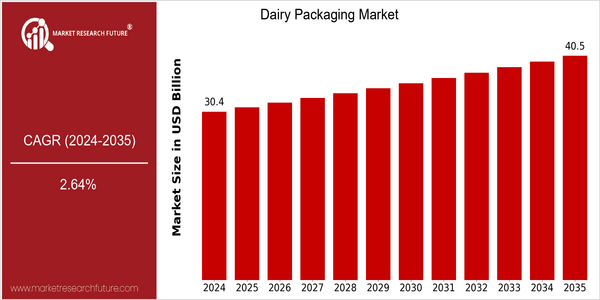
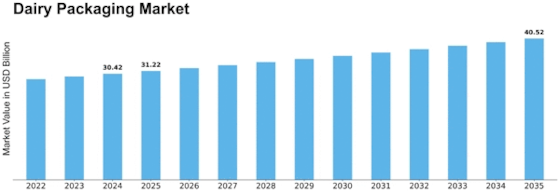

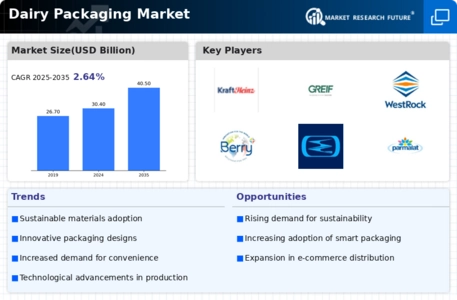
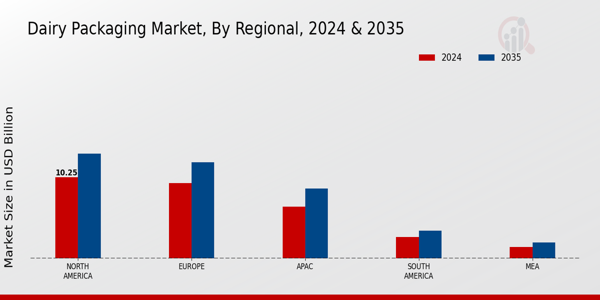
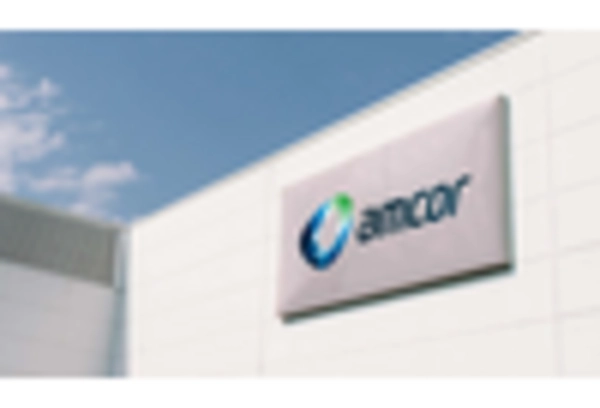
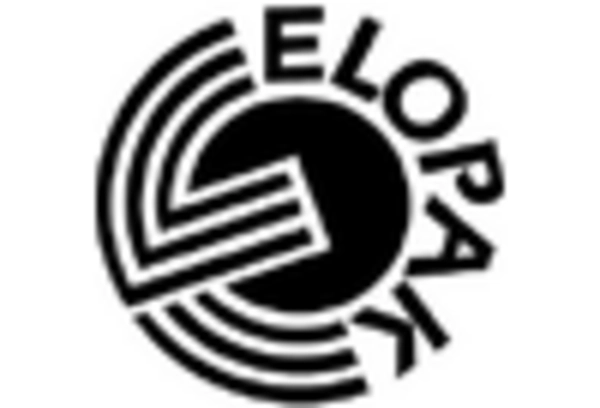
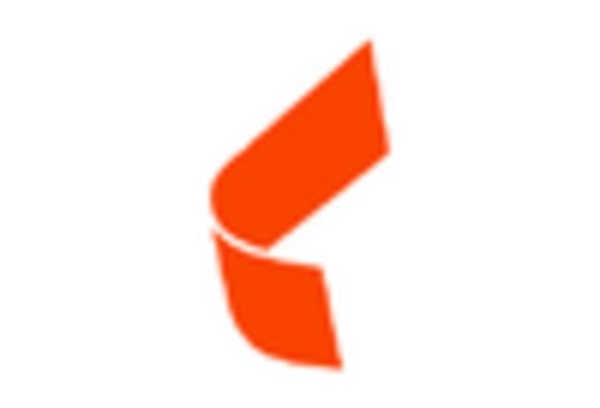
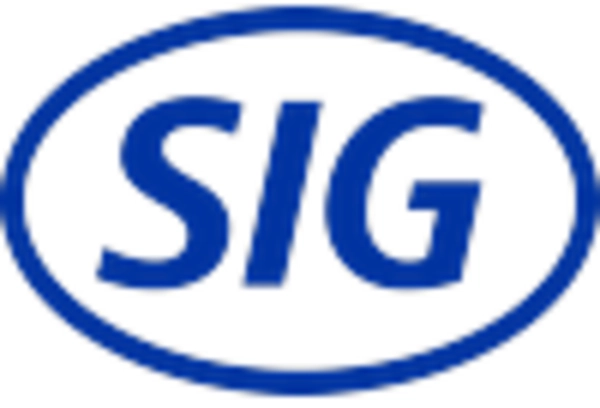
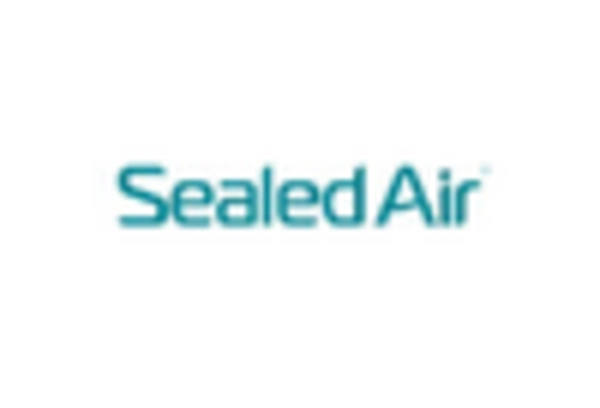
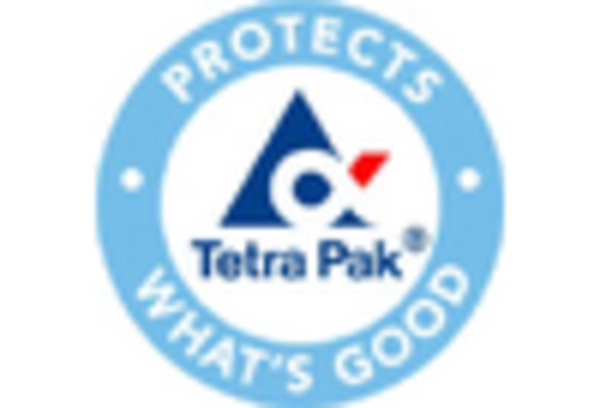

Leave a Comment